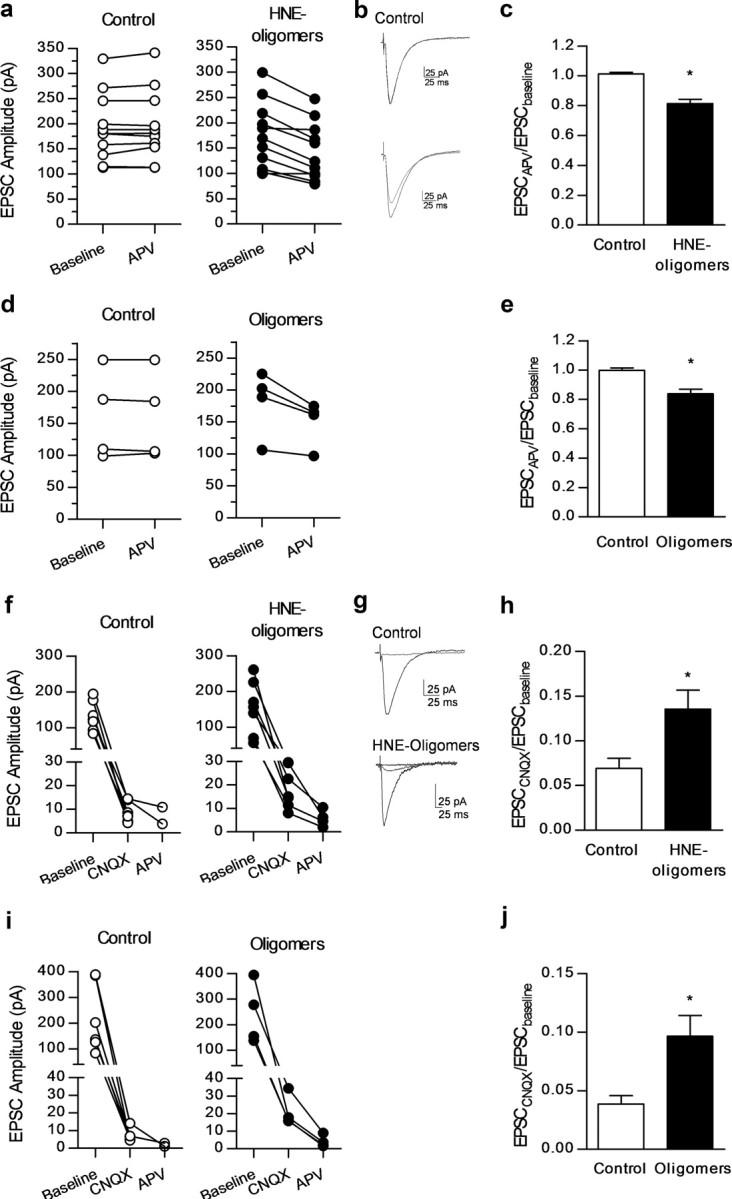Figure 6.

Treatment with a-syn oligomers is associated with an increased NMDA component of synaptic transmission. a, APV (50 μm, 20 min) significantly decreased EPSC amplitude in a-syn HNE-oligomer-treated neurons (●) but not in control ones (○), as evidenced by representative current traces shown in b. The effect of APV is illustrated as the evoked EPSC amplitude after APV application normalized to the baseline period (c). (*p < 0.05, t test, n = 11 per group). d, APV (50 μm) superfusion for 20 min decreased EPSC amplitude in neurons treated with a-syn oligomers (●) but not in control neurons (○). e, Average effects of APV superfusion are illustrated as the EPSC amplitude after drug application normalized to the baseline period. (p < 0.05, n = 4 per group). f, Blockade of EPSCs by CNQX (10 μm, 20–25 min) was virtually complete in control neurons (○) but not in those treated with a-syn HNE-oligomers (●), where small residual currents could subsequently be blocked by APV. Representative current tracings (g) are shown for each condition, corresponding to the baseline period and upon CNQX superfusion (control and treated neurons); tracings recorded after APV superfusion are additionally shown for HNE a-syn oligomer-treated neurons. h, Residual currents recorded in the presence of CNQX, normalized to the baseline period, were significantly larger in a-syn HNE-oligomer-treated neurons compared with control ones (n = 7 per group; *p < 0.05, t test). i, EPSC blockade by CNQX (10 μm, 20–25 min) was virtually complete in control neurons (○) but not in those treated with a-syn oligomers (●) where small residual currents were subsequently blocked by APV. j, Residual currents recorded in the presence of CNQX, normalized to the baseline period, were significantly larger in a-syn oligomer-treated neurons (n = 4) than in control ones (n = 6) (*p < 0.05, t test).
